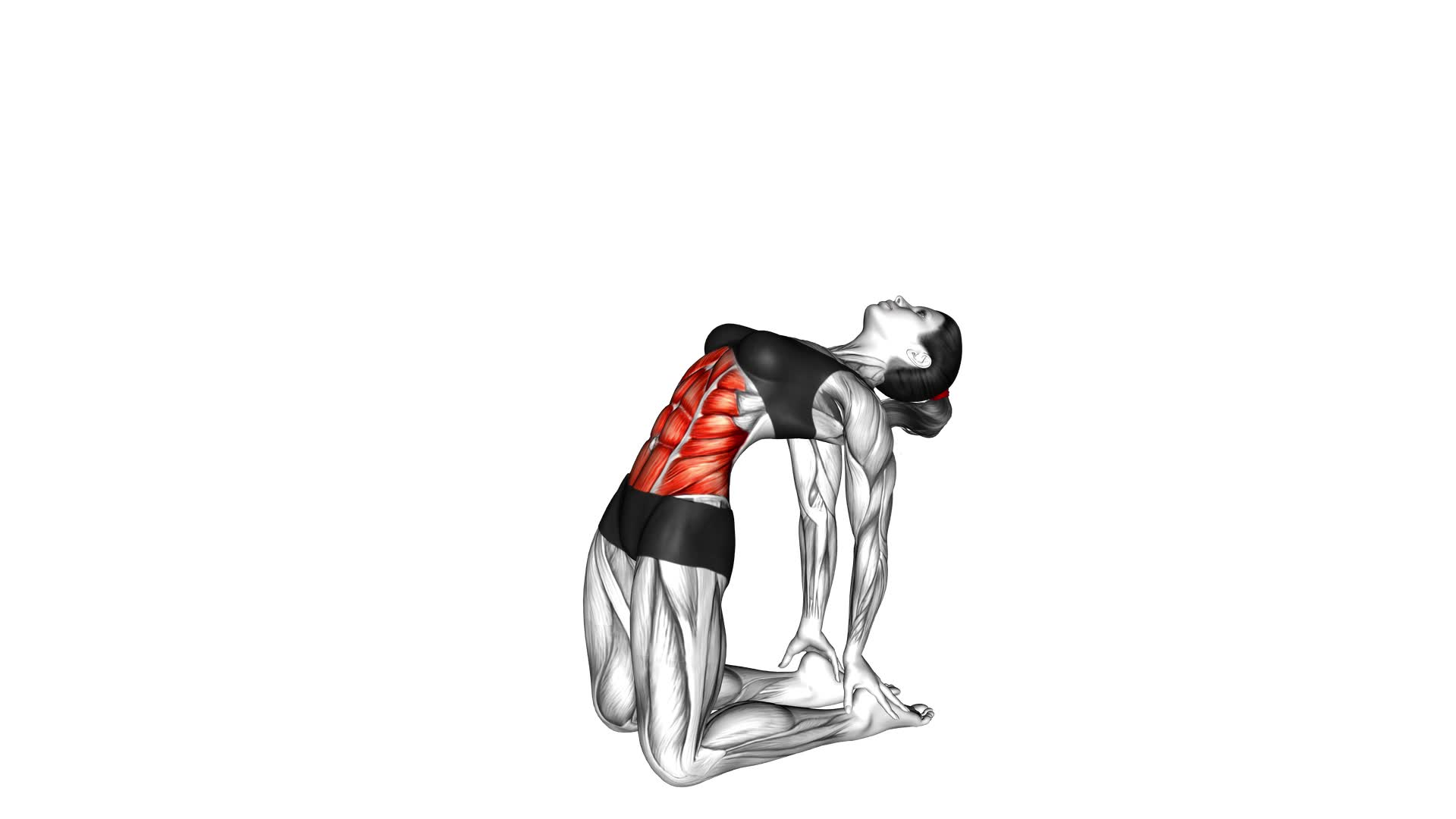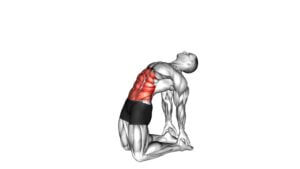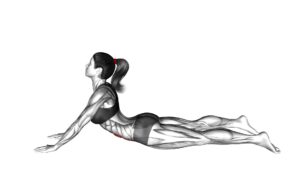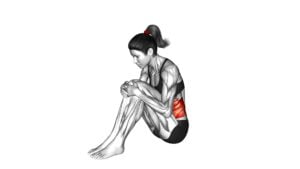Backward Abdominal Stretch (female) – Video Exercise Guide & Tips

Get ready to stretch and strengthen your abs with the backward abdominal stretch!
Watch This Exercise Video
In this video exercise guide, we'll show you the proper form and technique to perform this exercise effectively.
You'll also learn about common mistakes to avoid and modifications to make it more challenging or easier.
Follow our tips for a successful backward abdominal stretch and start working towards a stronger core today.
Let's get started!
Key Takeaways
- Increased flexibility and improved core strength are key benefits of the Backward Abdominal Stretch.
- Proper form and technique, such as using a firm exercise mat and engaging the abdominal muscles, are crucial for this exercise.
- Common mistakes to avoid include lifting the entire body off the mat and arching the back excessively.
- Modifications and variations, such as incorporating a medicine ball or twists, can be made to adapt the exercise to different fitness levels.
Benefits of the Backward Abdominal Stretch
You can experience increased flexibility and improved core strength through the backward abdominal stretch. Flexibility is crucial for overall fitness and plays a vital role in preventing injuries. Incorporating the backward abdominal stretch into your workout routine is a great way to enhance your flexibility and strengthen your core muscles.
To incorporate the backward abdominal stretch into your workout routine, start by lying on your back with your knees bent and feet flat on the floor. Place your hands on the back of your head, keeping your elbows wide. Engage your core muscles and slowly lift your upper body off the floor, curling it backwards. Hold this position for a few seconds, feeling the stretch in your abdominal muscles. Then, slowly lower your upper body back down to the starting position.
Proper Form and Technique
To ensure proper form and technique during the backward abdominal stretch, use a firm yet comfortable exercise mat. This will provide the necessary support for your body as you perform the exercise.
Here are some key tips to keep in mind:
- Start by lying on your back with your knees bent and feet flat on the mat. This position will help stabilize your lower back and prevent any unnecessary strain.
- Place your hands behind your head, interlocking your fingers. This will help to support your neck and prevent any strain or discomfort.
- As you lift your upper body off the mat, focus on engaging your abdominal muscles. This will ensure that you're targeting the right muscles and getting the most out of the stretch.
It's important to be aware of common misconceptions and potential risks associated with this exercise. One common misconception is that you need to lift your entire body off the mat. This can put excessive strain on your neck and back. Another potential risk is using too much momentum to lift yourself up, which can lead to injury.
By following proper form and technique, you can minimize these risks and maximize the benefits of the backward abdominal stretch.
Now that you know the proper form and technique, let's move on to the next section where we'll discuss common mistakes to avoid.
Common Mistakes to Avoid
One common mistake to avoid during the backward abdominal stretch is lifting your entire body off the mat. This mistake often happens when you try to use momentum to complete the exercise, rather than focusing on engaging your core muscles. To prevent this, make sure to keep your feet firmly planted on the ground and concentrate on contracting your abdominal muscles to initiate the movement.
Another common mistake is arching your back excessively during the stretch. This can strain your lower back and diminish the effectiveness of the exercise. To avoid this, maintain a neutral spine position by engaging your core and tilting your pelvis slightly forward.
Additionally, rushing through the exercise is another common mistake. Take your time and perform the backward abdominal stretch in a controlled manner to ensure proper form and maximal benefit.
Lastly, avoid using your arms to push yourself up during the stretch. Instead, focus on using your abdominal muscles to lift your upper body off the mat.
Modifications and Variations
To modify the backward abdominal stretch, you can incorporate different variations that target specific muscle groups and increase the intensity of the exercise. Here are some adaptations for different fitness levels and creative variations for added challenge:
- Adaptations for different fitness levels:
- Beginners can start by performing the backward abdominal stretch with their knees bent and their feet flat on the ground. This will provide more stability and make the exercise easier to perform.
- Intermediate fitness levels can try extending one leg straight out while performing the stretch. This will engage the core muscles even more and add a balance challenge.
- Advanced practitioners can lift both legs off the ground while performing the stretch. This will require greater abdominal strength and stability.
- Creative variations for added challenge:
- Add a medicine ball: Hold a medicine ball in your hands and lift it overhead as you perform the backward abdominal stretch. This will add resistance and engage the upper body muscles.
- Use a stability ball: Place a stability ball under your lower back and perform the backward abdominal stretch. This will increase instability and activate more core muscles.
- Incorporate twists: As you reach back, rotate your torso to one side and then the other. This will engage the oblique muscles and provide a deeper stretch.
Tips for a Successful Backward Abdominal Stretch
Looking to maximize the benefits of the backward abdominal stretch? Here are some tips to help you achieve a successful stretch.
First, let's address some common misconceptions. Many people believe that performing this stretch first thing in the morning is the best time. However, it's actually more effective to do it after a workout or physical activity when your muscles are warmed up. This will allow for a deeper stretch and prevent any potential injury.
Another tip is to focus on your breathing during the stretch. Take slow, deep breaths and exhale as you stretch backward. This will help you relax and release any tension in your abdominal muscles.
It's also important to listen to your body and not push yourself too hard. Start with a gentle stretch and gradually increase the intensity as you become more comfortable. Remember, the goal is to stretch and strengthen your abdominal muscles, not to strain or injure them.
Lastly, make sure to maintain good form throughout the stretch. Keep your back straight, engage your core muscles, and avoid arching your lower back too much. This will ensure that you're targeting the right muscles and getting the most out of the stretch.
Frequently Asked Questions
How Long Should I Hold the Backward Abdominal Stretch?
You should hold the backward abdominal stretch for about 20 to 30 seconds.
Stretching before a workout can help warm up your muscles and prevent injuries. It's also beneficial to stretch after a workout to improve flexibility and mobility.
Stretching helps to lengthen and relax your muscles, improving your overall range of motion.
Can the Backward Abdominal Stretch Help With Lower Back Pain?
The backward abdominal stretch can be beneficial for relieving lower back pain. By stretching the abdominal muscles, you can help alleviate tension and improve flexibility in your lower back.
Incorporating exercises for lower back pain, like the backward abdominal stretch, into your routine can help strengthen the muscles that support your spine.
Is It Safe to Perform the Backward Abdominal Stretch if I Have a Herniated Disc?
Yes, it's important to take precautions if you have a herniated disc. Performing the backward abdominal stretch can put additional pressure on your spine and worsen your condition. However, there's a modified version that you can try.
Consult with a healthcare professional or a certified trainer who can guide you through the proper technique and ensure your safety. Always prioritize your health and well-being when exercising with a herniated disc.
Can the Backward Abdominal Stretch Help Improve My Posture?
The backward abdominal stretch can help improve your posture by targeting the muscles in your abdomen and lower back. It can strengthen these muscles, which can help you maintain a more upright and aligned position.
To perform the stretch properly, lie on your stomach and slowly lift your upper body off the ground, keeping your hips and legs down. Remember to breathe deeply and hold the stretch for a few seconds before slowly lowering back down.
Is It Necessary to Warm up Before Performing the Backward Abdominal Stretch?
It's important to warm up before performing the backward abdominal stretch. Stretching before exercise has many benefits, such as increasing blood flow and flexibility.
When it comes to the backward abdominal stretch, there are different variations you can try. These variations target different areas of the abdomen and can help improve your posture.
Conclusion
In conclusion, the backward abdominal stretch is a beneficial exercise for improving flexibility and strengthening the core muscles.
By maintaining proper form and technique, you can avoid common mistakes and maximize the effectiveness of this stretch.
Additionally, modifying and varying the exercise can provide additional challenges and target different muscle groups.
Remember to listen to your body and make adjustments as needed.
Incorporating these tips into your routine will help you achieve a successful backward abdominal stretch.

Author
Years ago, the spark of my life’s passion ignited in my mind the moment I stepped into the local gym for the first time. The inaugural bead of perspiration, the initial endeavor, the very first surge of endorphins, and a sense of pride that washed over me post-workout marked the beginning of my deep-seated interest in strength sports, fitness, and sports nutrition. This very curiosity blossomed rapidly into a profound fascination, propelling me to earn a Master’s degree in Physical Education from the Academy of Physical Education in Krakow, followed by a Sports Manager diploma from the Jagiellonian University. My journey of growth led me to gain more specialized qualifications, such as being a certified personal trainer with a focus on sports dietetics, a lifeguard, and an instructor for wellness and corrective gymnastics. Theoretical knowledge paired seamlessly with practical experience, reinforcing my belief that the transformation of individuals under my guidance was also a reflection of my personal growth. This belief holds true even today. Each day, I strive to push the boundaries and explore new realms. These realms gently elevate me to greater heights. The unique combination of passion for my field and the continuous quest for growth fuels my drive to break new ground.







